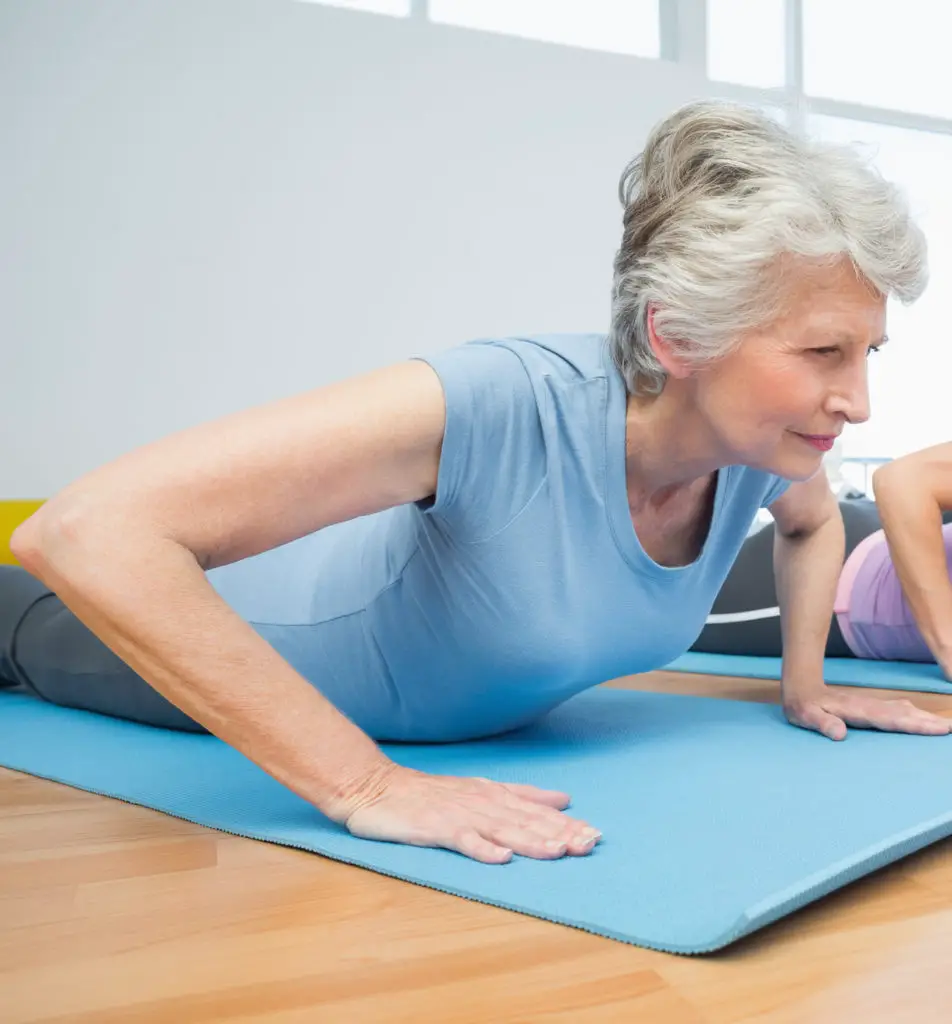You have heard of the McKenzie method for back pain, and would like to try the exercises derived from this technique to relieve your symptoms.
Let's start by clarifying something very important! To be able to use the McKenzie method effectively, you must at all costs have previously identified your "preferential direction ". It is a direction of movement allowing specific and adapted allowing you the relief of the symptoms. Most often, it is the extension or flexion movement that is best suited to calm low back pain and/or reduce pain radiation.
Normally, it takes an evaluation from a professional to get the most benefit from the McKenzie method. This will be able to identify the direction of movement that can help control your symptoms, as well as progress your exercises.
Note: To familiarize yourself with the Mckenzie method from a theoretical point of view (definition, benefits, contraindications, etc.), see the following article.
Extension exercises
If stretching is what improves your condition, here are some exercises often suggested by McKenzie therapists. They are classified in terms of strength progression, that is to say from the least constraining to the most aggressive for the lumbar region. If in doubt, do the exercises in order, making sure to monitor your symptoms.
The sphynx
- Lay on your stomach to start. Then, raise yourself onto your elbows so that your lower back is slightly arched.
- If the position is tolerable, try to hold it for 1 minute, then return to the starting position (on your stomach).
Note: If you feel an increase in pain, reduce the range of motion and reassess your symptoms. Any discomfort should disappear within a short rest.
Note: If you feel radiating pain in your leg, your preferred direction may not be extension. I then recommend that you consult.
Extension in prone position
- 1. Place yourself on your stomach with your hands at shoulder level (as if you were going to do push-ups).
- 2. Push with your hands so as to lift the upper trunk and arch the lower back. Raise as far as tolerated.
- 3. Repeat the extension movement for 10 repetitions trying to go higher gradually.
- Note: Again, if you feel an increase in pain, reduce the range of motion and reassess your symptoms. Any discomfort should disappear within a short rest.
- Note: If the pain does not return to normal, or radiates down the leg, stop exercising and consult a McKenzie therapist to confirm your preferred direction (or clarify the diagnosis).
- 4. If, on the contrary, the exercise is well tolerated and relieves you, try the following progression: Once at the top, raise your head upwards and try to exhale the air through your mouth. This will slightly accentuate the hollow in your lower back. Then return to the starting position (on your stomach).
- 5. Repeat the extension movement for 10 repetitions trying to go higher gradually.
Extension in standing position
ALTERNATIVE: Since many people don't have much opportunity to lie flat on their stomach during the day, there is an alternative that allows you to work on the extension in a standing position. This position doesn't allow as much extension in the lower back, but can be useful in case you want to do these exercises at work or in a public place! Here's how to perform the lumbar extension while standing:
- 1. Position yourself facing a wall with your elbows and forearms against the wall. Place your feet at shoulder height.
- 2. Bring your pelvis forward against the wall so as to accentuate the hollow in your lower back. Once you feel a comfortable and tolerable stretch (no longer than 3 seconds), return to the starting position. Repeat the movements for 10 repetitions.
- Note: If you feel an increase in pain, reduce the range of motion and reassess your symptoms. Any discomfort should disappear within a short rest.
- Note: If the pain does not return to normal, or radiates down the leg, stop exercising and consult a McKenzie therapist to confirm your preferred direction (or clarify the diagnosis).
bending exercises
If, on the contrary, it is flexion that constitutes your “preferred direction”, do the following exercises instead. They are categorized by position, and must be carried out following the same principles as those explained previously:
Flexion while lying down
- 1. Lie on your back with your knees bent.
- 2. Bring the knees towards your shoulders using your arms, then apply a slight underpressure at the end of the movement.
- 3. Repeat the bending movement for 10 repetitions, trying to pull the legs more towards you (gradually, of course).
- Note: If you feel an increase in pain, reduce the range of motion and reassess your symptoms. Any discomfort should disappear within a short rest.
- Note: If the pain does not return to normal, or radiates down the leg, flexion may not be your preferred direction. Then stop exercising and consult a McKenzie therapist to confirm your preferred direction (or clarify the diagnosis).
Flexion while seated
ALTERNATIVE: If you don't have many opportunities to lie on your back during your day (eg: at work or in a public place), you can do an alternative movement that will work your spine in a flexed position.
Do the following routine:
- 1. Sit in a chair and move forward as far as possible (so that you are sitting on the front part of the chair and without support).
- 2. Spread your legs and bring your arms and trunk as low as possible.
- 3. Extend your arms so that you curl up as much as possible.
- 4. Then return to the initial position. Repeat the movement 10 times.
- Note: If you feel an increase in pain, reduce the range of motion and reassess your symptoms. Any discomfort should disappear within a short rest.
- Note: If the pain does not return to normal, or radiates down the leg, stop exercising and consult a McKenzie therapist.
Conclusion
Here are 5 exercises frequently used by Mckenzie therapists once the preferred direction of their patient has been identified. I imagine you intend to try these exercises for yourself (if you haven't already!).
What I recommend to you is to stop all exercise as soon as you feel pain that gets worse, and that does not return to its initial state after a short break. This implies that the exercise is not suitable for your condition, or that it is downright bad for your back.
Also remember this: consult a health professional if you ever feel your radiation worsening, or if there is tingling, tingling or numbness in your leg after exercise.
My name is Anas Boukas and I am a physiotherapist. My mission ? Helping people who are suffering before their pain worsens and becomes chronic. I am also of the opinion that an educated patient greatly increases their chances of recovery. This is why I created Healthforall Group, a network of medical sites, in association with several health professionals.
My journey:
Bachelor's and Master's degrees at the University of Montreal , Physiotherapist for CBI Health,
Physiotherapist for The International Physiotherapy Center


